Leaderboard
Popular Content
Showing content with the highest reputation on 02/05/23 in all areas
-
8 points
-
Well I kept on going after the last 6 LPs with the same theme Genesis members with solo or collaboration albums Artist - Peter Gabriel, Steve Hackett, Phil Collins, Tony Banks and Fish ex guitarist Anthony Phillips, Mike Rutherford in Mike And The Mechanics7 points
-
6 points
-
Okay you boys get polished up for tomorrow the 9th anniversary of CCC&C. No reading in your skivves and slick your hair back a bit (those that still have hair). A good old time with gifts and prizes some as nice as oldtimers toaster!6 points
-
6 points
-
5 points
-
5 points
-
rtm a relaxing spin with Andreas Vollenweider´s " behind the gardens-behind the wall-under the tree " driven by the adc xlm mk iv selceted5 points
-
4 points
-
I have read this thread with a lot of pleasure. Hearing you rave about RtR makes me a little sad. I had a Revox A77 half-track with two Sennheiser MD421n microphones in my youth. I didn't record vinyl or FM but our rock band in the rehearsal room, the church choir in the village with organ, the piano pieces a good buddy had rehearsed for the entrance exam at the Berlin Hochschule der Künste (he was accepted). Another good buddy was a very good jazz drummer at a young age and is now a professor of percussion at the University of Munich. I had often recorded his jazz band at gigs. A copy of our first days in a studio with our rock band and much more. These tapes would all be very nice and good sounding acoustic contemporary witnesses today. From today's point of view I have committed a stupidity because I sold all this including the tapes more than 30 years ago. Suddenly the size and weight of the equipment was too much for me, new tapes too expensive, etc. What I would give for it today if I still had all that. Some of you may be able to relate to this because you have perhaps done similar stupid things in your life. I have one consolation, my mother and family still has the Braun TG 1000 that my father bought in 1972. It was his pride and joy. Here a picture from the web showing this model. It was not so popular in the US. The look was timeless and a role model for brands like NAD 15 years later. Because Braun was more a company of optical styling and good looks the technical system was delivered by another company called Uher, they were RtR experts at that time. In a similar way Braun made its own optical design of British Quad ESL 57 electrostatic speakers. https://www.preservationsound.com/2014/06/less-but-better-the-braun-tg-1000-tape-recorder-of-1970/4 points
-
well buddys ..the yamaha mc 11 hasn´t arrived yet but the Dynavector 380 DV / 20 B MC did . I unboxed it and noticed that´s real mint , the beryllium cantilever as well as the shibata diamond looking untouched . Just mounted it on the sme headshell and will drive it on the sme 3009 tonearm only , because it´s max counterbalance shall be 1,5 ( +/- 3 % ) only. So it´s for light tonearm use only. Here it is visible4 points
-
Good Grief! Didn't realized I was still logged in from hours ago Until I heard the browser ding3 points
-
HA! I built my pc without cameras, don't fret. Microphones? Not confident about the motherboard... I'm camera shy anyhow since that big ugly stick got to me sometime in my sleep in the past decade.3 points
-
3 points
-
3 points
-
3 points
-
3 points
-
3 points
-
Kind of mellow with the tunes today. Tired of taking aspirin so I knocked back a shot of 12yr! better now. This dude's lyrics reeked of sorrow sometimes. Shame. Bought this one because of the one tune I heard long ago on WDIZ!3 points
-
5# of bacon added to a frozen pizza? (insert) Cheech & Chong concert/cop munchie scene (here) `cause I won't3 points
-
Sorry to hear health issue(s) predicates sale. I’m inclined to believe selling individual pieces will see quicker returns. Those are well regarded pieces on their own and the majority will want to add a piece here and there, not an entire rig.2 points
-
Thanks to @rivlinmbuying the H2s and my coworker buying two of my least worn watches, this baby should arrive on Tuesday. I am pretty pumped. Bill2 points
-
2 points
-
I am quite happy about losing my salt and pepper. Now... I'm platinum blonde2 points
-
2 points
-
2 points
-
Don't be afraid of slate used for billiards. Sure there is some to be found.2 points
-
2 points
-
I've seen this before, and I *think* it was a Klipsch custom item for use with electronic organs; PWK did say that Klipschorns were great speakers for that application.2 points
-
2 points
-
Still qualifies almost as a "Best Of" with all the records they had after then @Shakeydeal!2 points
-
2 points
-
2 points
-
I think you are right, took another Google dive, similar themed latticework. We need Postman56 to open them up.2 points
-
https://www.theabsolutesound.com/articles/shure-v15-type-vxmr-phono-cartridge/ Up to 84% in savings when you subscribe to The Absolute Sound SUBSCRIBE   Shure V15 Type VxMR Phono Cartridge REVIEW by Paul Seydor Feb 03rd, 2023 A A A  The Shure Corporation, founded in 1925 under the moniker “Shure Radio Parts Company,” by Sidney Shure in Chicago, Illinois, is one of the oldest and most successful American audio companies. It originally sold radio parts, then microphones, eventually diversifying into phono cartridges and tonearms, wireless microphones, and mixers, right up to the present day when it manufactures headphones, personal monitor systems, wireless microphone systems, conference systems, and digital signal processors. But for audiophiles of my generation and doubtless a few subsequent ones, the Shure name will always be synonymous with high-fidelity phono pickups, even though the company ceased manufacturing all phono products in the summer of 2018. Reasons given were reduced demand and the difficulty of maintaining quality standards owing to the disappearance of parts that “were not as good as they were at one time.” Shure began manufacturing phono pickups in 1933 and soon became an industry leader known for high performance, technological innovation, and great reliability. The 900MG, introduced in 1948, was the first pickup that could play both LPs and 78s. In 1954 the M12 Dynetic Phono Reproducer tonearm/cartridge combination was able to track records at the unprecedentedly low force of one gram. In 1958 there came the M3D, the first stereo moving-magnet pickup, designed in secret with CBS while the latter was developing its first stereo LPs. Shure pioneered the moving magnet, whereby a magnet vibrates within a stationary coil, which became the dominant way to generate a phono signal off a record for almost four decades after the advent of the LP era and continues to be in wide use today, along with moving-coil technology. While I have no hard figures to back this up, I don’t believe I’ll get into trouble suggesting that when I first cut my teeth in high-end audio over 50 years ago, there were more Shures in use in serious consumer audio and audiophile systems than cartridges from any other manufacturer, at least in America during the first two-and-a-half decades of the stereophonic era. In 1964 Shure introduced the component that made audio history, immediately becoming a reference standard, eventually an icon and a legend: the Shure V15 (so named because the stylus angle replicated that of the cutting stylus). The significance of this product was two-fold: advancing the state of the art in several key areas of performance and in effect serving notice that Shure was going after the audiophile segment of the home-audio market that would settle for nothing less than the best in its pursuit of high fidelity. Shure even coined a word to highlight the most salient aspect of the new model’s performance: trackability—“the ability to maintain contact between the stylus tip and the record groove at all frequencies using a minimum tracking force.” Over the next 33 years the company introduced seven more versions of the V15, each with significant, sometimes substantial improvements over previous models, covering such areas and items as flatter, more neutral frequency response; lower distortion; stylus, shank, and cantilever sizes, shapes, materials, geometries, and ways of attaching styli to shanks and cantilevers to pole pieces; new approaches for dealing with warps, resonances, and dust; protecting the stylus; and instituting a regiment of quality control procedures that set new standards for reliability, sample-to-sample uniformity, and longevity of phono pickups. It’s hardly a surprise that when fans of Shures get together, discussions are as lively as those from a bunch of LS3/5a groupies. My own history with its products goes back to the summer of 1969, between graduating college and entering graduate school, when I bought my first serious audio system: Acoustic Research AR 5 speaker, AR integrated amplifier, and AR XA turntable. In those days we had no Absolute Sound or Stereophile, and I suspect readers with long memories will probably recognize these as components that garnered rave reviews in the pages of High Fidelity, HiFi/Stereo Review, and Audio, where measurements ruled and listening was relegated to a few relatively brief remarks at the ends of reviews. I’d have probably bought an AR pickup if the company had made one, but the Shure M91E, one down from the V15, got great reviews, word of mouth being that it came so close to the flagship as to constitute virtually no compromise at all, and the combination was endorsed by AR itself. My references, by the way, to HiFi/Stereo Review, etc. should by no means be taken as a disparagement of that first system of mine, which was by any standard truly excellent, one that brought me years of pleasure and that would have been well reviewed in any of the independent audiophile magazines that came later. (The XA/M91E combination remains one of the finest-tracking setups I’ve ever used, which is quite a number.) Audiophiles of my generation will also remember that this system was firmly in what was called the “New England” camp, which is to say that frequency response, tonal neutrality, low noise and distortion, and reliability were the fundamental criteria by which the quality of an audio system was evaluated. This was because accuracy was the principal goal. The V15 and its iterations were Shure’s answer to that goal: pickups that would reproduce as faithfully as possible the signals cut into the grooves. It was so successful that despite serious competition by the likes of Stanton, ADC, Audio Technica, AKG, Bang & Olufsen, and others, Shure remained the industry leader, the latest V15 the reference standard, at least to the dawn of the digital era. Several years after I bought that AR XA, I upped my game with a Thorens TD125 II table and an SME 3009 II Improved arm, but I stuck with Shure and bought the V15 Type III, which set a new standard for flat frequency response, neutrality, and, of course, trackability. To be sure, there were other voices, other technologies, including Grado, which used a moving iron, and Denon and Ortofon, which used moving coils. But mc’s occupied at best a fringe area of the American audiophile scene and were even disparaged—often unfairly because not even auditioned—by the mm crowd for having far from flat frequency response, requiring weighty tracking forces that allegedly damaged records and outputs so low as to need preamplifying devices like transformers and headamps (the latter typically prefaced by the adjective “noisy”). Beginning in the early seventies, however, many audiophiles, thanks to the appearance of alternative magazines like The Stereophile, The Absolute Sound, and International Audio Review, began to hear the New England sound differently. Was low coloration, which the V15s certainly had in abundance, now maybe just a little “colorless”? Could instrumental tones, timbres, and textures be somewhat more saturated, voices have a little more flesh, blood, and character? Was all that neutrality perhaps a tad uninvolving, dare we say even a bit dull? Could the overall presentation be a little more transparent, was there more detail to be excavated from those grooves? What about dynamic range—were we wrong to think the window could be opened wider? Did the high compliances that made all those low-tracking forces possible, not to mention the mass of the magnet itself, result in a certain loss of immediacy, of impact, of timing, of speed, vitality, life, and liveliness which the lower compliances and higher tracking forces, not to mention small coils vibrating between stationary magnets, might restore? By the time the eighties were in full swing moving coils dominated the pages of virtually all the alternative audio magazines and claimed the lions’ share of their reviewers’ and readers’ attention. It was axiomatic that any really serious state-of-the-art record-playing setup used an mc, while moving magnets were relegated to entry-level, budget, or “value-driven” systems—not exactly disparaged, mind you, but second-class citizens all the same. It didn’t help that mc’s were typically much more expensive than mm’s. A lively give-and-take involving the V15 among three audio reviewers (including our own Anthony Cordesman and the recently returned Michael Fremer), culled together over a period of many years, that accurately reflects the dominant debate throughout the eighties, nineties, aughts, and beyond, can be found here: stereophile. com/content/shure-v15-v-mr-phono-cartridge. Two of the reviewers conceded the Shure was awfully good for the money, but in high-end terms that’s a kiss of death: code for the component you settle for when you can’t afford the one you really want. Ironically, while the high-end sector threw in all but uncritically with mc’s, there was a growing disconnect between it, on the one hand, and, on the other, the professional audio community and the consumer audio market at large. In the latter, that is, the large but somewhat amorphous sector of the home market made up of consumers who, though not high-enders (many not even audiophiles as such), know there is much better equipment to be had than the big-box, mass-market junk, Shures and other popular mm’s continued to sell like crazy, even among the non-high-end sector of the audiophile market. As for the professional community, the late Doug Sax, for a long time the most highly respected mastering engineer in the world, always preferred mm’s (specifically Stantons) because they reproduced what he was mastering accurately. [Doug Sax once said to me, with tongue in cheek, “I like moving-coil cartridges—in someone else’s system.” —RH] Likewise, the gifted recordist Kavi Alexander of Water Lily records, who preferred a specific Audio Technica mm. When Shure finally discontinued the VxMR, the last remaining 30 were purchased by the Library of Congress (presumably because its superior tracking force at one gram protected valuable LP holdings more reliably than anything else), while Sony snapped several up for disc remastering. Even some high-end reviewers broke ranks. In 1974 J. Gordon Holt, founder of Stereophile and never exactly a hot admirer of moving coils, pronounced the V15 Type III “one of the two best pickups available, and probably the best for most hi-fi perfectionists” (the other a Decca, which wasn’t an mc). (It was this review that persuaded me to buy the V15-III.) Five years later Holt wrote of the Type IV, “the person who merely (!) wants a cartridge that will reproduce what was originally inscribed on his discs may never again feel the need for a better cartridge than this one” and then related the story of how Stan Ricker, another distinguished mastering engineer, demonstrated to an audio reviewer whose publication had panned the Type IV that it was all but impossible to tell the difference between the mastertape and the record as played with the Shure. My colleague Robert E. Greene favors the same Audio Technica as Alexander, and Neil Gader, so far as I am aware, now mostly uses a Clearaudio mm. Perhaps even more significant, not to mention massively ironic, after Shure stopped making the VxMR, it continued to be reviewed with great enthusiasm online, while several sites that take exacting and sophisticated measurements found in almost every instance the VxMR superior to any other pickups they’d ever tested. Meanwhile, quite a number of reviewers wrote they were glad they acquired one before it disappeared, including the redoubtable Ken Kessler, more knowledgeable about vintage gear than anyone else I know personally, who in a recent posting placed the Shure V15 first on a list of products he’d like to see resurrected. To give you an idea of how thoroughly mc’s dominated, not to say indoctrinated, the high end, when I began reviewing equipment for TAS in the late nineties, there was a Shure V15 VxMR circulating among the pool of reviewers, none of whom wanted to review it—the box wasn’t even opened—until it landed at my door, courtesy of Harry Pearson, who suggested I give it a go. And I would have, except that shortly thereafter Shure announced it was discontinued. It seems the ultra-thin beryllium, used to make the shank substantially lower in mass than such commonly used materials as aluminum or boron, was carcinogenic. Actually, the real culprit was beryllium dust, not the rolled sheets from which Shure fashioned the shanks. All the same, the Environmental Protection Agency demanded the installation of a ventilation system so prohibitively expensive that Shure couldn’t begin to make the investment back on future sales. There was little choice but to give it the axe. (Shure had a large enough backlog of VxMR stylus assemblies to have kept selling the pickup for several more years. But to do so would have left consumers who had already invested in a VxMR without a replacement stylus should they need it, which would have gone against the company’s policy of offering replacement styli for five years after any given model was retired.) That killed any review. As no one else at the magazine wanted the pickup and Shure never asked for it back, I put it in a drawer and promptly forgot about it. Like so many audiophiles of my generation, once I went “high end,” mc’s were all I wanted to hear. But chance, fate, or whatever other force in the universe to which you assign agency over our lives had other plans. Cruising through some websites where vintage gear is sold, I chanced across a new-in-the-box AR XA turntable. I must have been in a nostalgic mood, because I snapped it up without delay, not least because I realized I had the perfect pickup for it: that V15 VxMR languishing those several years in its unopened box. I wasted no time unboxing the AR and installing the Shure. Sound and Performance I’m not about to tell you that what I heard was revelatory. In fact, it came as a bit of surprise. Although in a general sense the sound bore a recognizable resemblance to what I remembered from some three decades before, gone was what at the time struck me as the unprecedented neutrality of that SME/V15-III combination, replaced by a distinctly warmer, fuller, and heavier tonal balance from the whole bottom end through the upper bass; outstandingly smooth and non-fatiguing in the midrange and presence regions (Shures are ever thus); but rolled off, even a bit dark up top. Given Shure’s QC, I didn’t think my VxMR was defective (it wasn’t). More research turned up a statement in Shure’s promotional literature to the effect that the VxMR was “warmer and more musical than ever.” This was the first and only time I can find any company statement for the V15 series where flat frequency response, the lowest possible coloration, and tonal neutrality were not the featured, indeed the insisted-upon claims (along with trackability), and it left me wondering if the company weren’t paying mere obeisance to the audiophile community. So I consulted several reviews, online blogs, and other audiophile sites and found that both the critical and consumer reactions to this last Shure were rather mixed. Almost nobody actually disliked it, but even longtime loyalists missed the high neutrality of the Types III, IV, and early Vs, finding the bottom-end warmth tolerable or better, but far from happy with the apparently rolled off top end. For myself, though I liked what I was hearing, my experience corroborated the descriptive truth of these assessments. The VxMR’s tonal profile was warm, smooth, mellow, relaxed, natural, even beautiful; but it was nevertheless rarely as detailed, vital, exciting, alive, transparent, or top-end extended as my favorite mc’s. As more and more turntables and arms came my way for review, I started using the xMR—the MR, by the way, stands for the Micro-Ridge stylus shape that mimics the shape of the cutting stylus—in other arms. Soon enough a rather different sonic personality began to emerge. To begin with, putting it in an arm other than the AR’s—at first an SME V, later the gimbal-bearing Jelco supplied with Luxman’s PD151 turntable (see my review in Issue 322), with the lowest-mass headshell I could find (a Rek-O-Kut)—immediately resulted in a more neutral tonal profile much closer to what I remembered from my III. This was instantly apparent at the bottom end, where a lot of the bogus warmth—warmth not in the recordings—was eliminated, which in turn resulted in considerably more bass detail and definition. Indeed, definition and detail bottom to top was improved, as well as transparency, which began to approach that of mc’s. My conclusion was that the VxMR is not particularly well suited to the arm on the XA. The first two iterations of the V15 could be used successfully there, but my guess is that as compliance rose and body, cantilever, shank, and tip mass were reduced in subsequent models, that arm just wasn’t an optimal match (I suspect the AR’s bearings had too much friction—my experience suggests these later V15s like high-quality, captive, gimbal bearings). I’d also avoid very high-mass arms (e.g., Groovemasters) and stick with medium or lower. Another reason for these improvements is that I was careful to attend to capacitive loading (the phonostage in my McIntosh C53 preamplifier allows for a wide of choice of settings). Shures are not excessively sensitive to this, but you will not get the flattest response of which they are capable unless they see at least 275pF, and higher (up to 400pF) is at least theoretically better. Then one day, disaster: a rare slip of the finger and the stylus assembly was annihilated. This was near the beginning of the pandemic, so back into the box went the Shure, and that was the end of that. Except not quite—the improved sound I heard in the other arms wouldn’t get out of my head. I knew there were replacement styli for Shure pickups, but I never paid them much mind, on the not entirely unreasonable assumption that no aftermarket part by a third party could ever be as good as the OEMs. Yet more research turned up comments by audiophiles who struck me as serious people, who had done considerable research, who listened very carefully, and who, unlike myself, had undamaged original stylus assemblies to which to compare the aftermarket replacements. The supplier for these is a Japanese company named Jico, which offer a bewildering number of replacement styli for too many vintage mm’s for me even to count. Rome Castellanes, of LP Gear, was kind enough to lend me the Jico replacement for the xMR—or, rather, a Jico replacement since, in fact, Jico makes a total of six different styli for the xMR. Three of them have SAS styli (a further refinement of the Micro-Ridge from the original) with boron, sapphire, or ruby cantilevers; the other three, much less expensive, offer elliptical, hyper-elliptical, and Shibata styli. I opted for the boron because my experience suggests that, all other things equal, boron always sounds more neutral, less colored. The sonic difference wrought by the replacement was again immediately apparent: neutrality even further improved, considerably so, but now with a top end in great evidence without being in the least too much so. With the caveat that owing to my ham-fistedness I am unable to conduct a direct comparison between the original stylus assembly and the Jico replacement, I am prepared to agree with those who claim the Jico boron is an improvement over the original (beryllium or no), notably in those areas of overall neutrality and high-frequency extension. But there are improvements in other areas as well. For one thing, there’s a greater impression of life and lifelikeness; I would even add “liveliness” so long as that is not interpreted to mean the excitement of spurious resonances and frequency response anomalies. Along with these go even greater improvements in transparency, clarity, control, and dynamics. Allow me to put some of this in more specific terms. I’ve taken quite an interest lately in the Connoisseur Society recordings of the great sarodist Ali Akbar Khan. The sarod is an extremely complex instrument to reproduce well, especially when the going gets fast and furious, which it typically does in the second half of many ragas. The VxMR/Jico reproduced everything of his I threw at it with quite amazing precision, control, and clarity yet without ever sounding etched and overly analytical. The same is true for the three guitarists on Impex’s stunning new Saturday Night in San Francisco, one of whom is the stellar virtuoso John McLaughlin. Wow—absolutely no hint of smudging, smearing, or blunting attack, plucking, picking, sliding, and strumming. Following this I played A Handful of Beauty, with McLaughlin joining the Indian violinist Shanker. Again wow. I can imagine any number of setups coming a cropper on this or the Khan recordings, but the Shure kept the pace without breaking a sweat, missing nary step nor beat. Those who can sit through these recordings as played on this arm/table/pickup combination and complain about lack of involvement or actually be uninvolved either have axes to grind or should be examined for ADD; and those who can remain physically unengaged should have their blood pressure or at least their pulse checked. The VxMR/Jico has imposing bass detail, articulation, control, and definition, as evidenced by the aplomb with which it dispatched Stokowski’s Rhapsodies album or how commandingly it reproduces pianos in all their strength, body, and tone (try the late James Boyk’s powerful recording of Prokofiev’s sixth sonata, or the stylish pianism of William Bolcom in his classic Gershwin recital on Nonesuch, where the piano seems to appear right in front of you between the speakers). As for soundstaging and imaging, in my trusty Bernstein Carmen (DG) the comings and goings of the singers and choral groups across and around the stage were reproduced with masterly verisimilitude. When it comes to voices, in the absence of a litany of examples, the VxMR/Jico’s midrange is about a dead neutral as I’ve ever heard from a phono pickup and considerably more so than what most can manage. In other words, it is not rich, warm, refulgent, or luscious as such, but the overall tonal neutrality and musical naturalness make you feel as if you’re hearing them back through the recording chain to the venue as they actually are, especially with respect to vocal character and with excellent roundedness and dimensionality. One of the most beautiful, i.e., truthful, recordings of orchestral strings I’ve ever heard is not from some audiophile label but from DG’s all-analog recording of Beethoven’s Opus 131 performed by Bernstein with the full complement of the Vienna Philharmonic strings: upper strings meltingly, caressingly, exquisitely beautiful, but fierce and forcible when called for in the climactic allegro; cellos and basses rich and warm with very impressive low-end extension, weight, body, and depth of tone. That is just how the VxMR/Jico reproduced them. Then there’s the Vegh recording (Valois) with string quartet as Beethoven originally wrote it—find the right level, close your eyes, and it’s no effort at all to “see” the four players arrayed before you. One thing I really like about this recording, which the VxMR/Jico nails, is that the Vegh’s is a from-the-ground-up sound, not a top-down one, so the cello is solidly present as foundation and humanizing voice. In many recordings of string quartets, the cello is a bit light because the miking is too close to capture the instrument’s fullness as it projects into space). Not here and certainly not as reproduced by these record-playing components. As for the top end, it continues to strike me as a tad recessed on some recordings or simply non-interventionist (thus more real sounding?) on others. Most of the recordings I use to evaluate atmosphere are excellently reproduced, e.g., Joel Coen’s A Medieval Christmas (Nonesuch), recorded in Boston’s Museum of Fine Arts, where the resonant acoustics provide the appropriate church-like ambience, while the mike placement accords just enough focus and presence on the performers so that nothing is obscured. It’s when it comes to upper percussion, notably in jazz with its cymbals, high hats, wire brushes, bells, etc., that some doubt arises. I miss some of that nice bite, ring, shimmer, definition, extension, and, yes, detail, not to mention surrounding air, that I get from my favorite mc’s and that I don’t hear to the same degree with the Shure. Are the mc’s exaggerating these effects a bit or is the VxMR/Jico softening them a bit and pushing them down? I don’t know. Since even small jazz venues typically use sound reinforcement with microphones, amplifiers, and PA-type speakers, who knows what these instruments really sound like? Then, of course, none of us was at the recording sessions. As I’m writing this, that still astounding state-of-the-art The Sheffield Drum Record direct-to-disc is playing and it sounds very real, not in the least hyped or oversold but still eye-poppingly present and accounted for. But I know that when I switch to one of my Denon 103s, a vintage Ortofon, or a new Ortofon, I will love even more the soupçon of tactile body, extra presence, and greater lifelikeness on offer from them. Maybe the best counsel is to set aside the debate and rejoice instead in the way each serves the music beautifully in its own way. To summarize: no, the VxMR/Jico doesn’t exhibit quite the presence, color, tonal saturation, vitality, vividness, detail, transparency, snap and dynamism, and top-end extension of the best mc’s. But neither is it so deficient in those qualities as to undermine enjoyment or overshadow its several compensating virtues, which are mightily compelling in their own right. Among these are a seductively smooth, easy, completely relaxing and involving musical naturalness that, nevertheless, doesn’t sacrifice that much that’s essential in the way of drive, grip, excitement, and the rest of it. All of which is to say that when I press it into service, I do so eagerly and with great pleasure. I also do so regularly, which I am able to do quickly and conveniently now that I’ve given up the insanity of using arms with only fixed headshells. In other words, the Shure V15 VxMR/Jico boron is now one of my references. Oh, almost forgot: haven’t said a word about tracking. The only serious flaw I find with Analog Spark’s fabulous remastering of the original Broadway West Side Story is the ridiculously overmodulated police whistle that brings the Prologue to its sudden stop. Only one pickup I have in house reproduces that whistle without any mistracking whatsoever: the Shure. My Denon 103 gets pretty close at three times the downward force. Let this example suffice to reaffirm that when it comes to trackability, the V15 after all these decades still reigns supreme. For that reason alone—though as I have tried to show, it’s not alone—it is assured (or should I say, “ashured”?)—a place in the pantheon of phono pickups. Conclusion Buying used gear, let alone long-discontinued vintage gear, is always risky, though most people I know who’ve done it, including myself, have had positive experiences. I have a good friend who loves vintage gear, easily has over two dozen phono pickups, almost every one of which he acquired through eBay or other second-hand sources, and plays them on several vintage setups that all sound perfectly, albeit differently marvelous. One nice thing in the Shure’s favor, as is not the case with most vintage pickups, is that thanks to Jico for the foreseeable future you don’t have to worry about stylus replacement. Occasionally people even sell bodies only, which banishes any worries about stylus condition—just add a Jico. Bear in mind too that replacement styli are available from Jico for every V15 back at least to the Type III. I’m keeping my eye out for a Type IV, the one Holt raved about, as that’s the first model to sport the Dynamic Stabilizer (see sidebar) and also the one many V15 fans judge the most echt neutral. Prices? As I write this, three brand new VxMRs in factory-sealed boxes are listed for $888–$1099; typical prices for used ones in good or better condition range from $450–$700; and right now there’s a body only going for around $230. (These prices often exceed those of many past mc’s that got better reviews in the specialist magazines—make of that what you will.) So, let’s say you buy that factory-sealed one for $900. What does this get you in today’s market? Well, there are a lot of really good current mm’s and mc’s, both high and low output, clustered at that price point, without even mentioning the Denon 103 still in production for $350, which’ll come close to the Shure for tonal neutrality and is certainly livelier and more dynamic, even if it doesn’t track quite as well. Comes to that, though, it tracks well enough, and mc’s in general have a come a long, long way in this respect since the sixties. And there are dozens and more preamps, integrated amps, and phonostages at reasonable prices that are lower in noise than those of decades past, so step-up noise isn’t much of an issue any longer. Why buy this old thing? Perhaps better to answer the question in a different way. All things considered, I know of no other phono pickup, mc or mm, that offers quite the combination of features, completely non-fatiguing beautiful sound in the way tonal neutrality often guarantees, yet that is also engaging and involving and that tracks flawlessly. What’s more, there’s the cache of having an important piece of audio history that is far from irrelevant or left at the post in today’s world. I’m glad I have one and wouldn’t be without it. Specs & Pricing Jico SAS/B stylus Price: $282 LP Gear Henderson, NV 89052 lpgear.com info@lpgear.com Tags:ANALOGCARTRIDGEPHONOSHURE  Latest Videos  Building the Burmester 159 Mono Block Power Amplifier  How Does The RIAA Curve Work?  The Magico M9 & The Myth of the Law of Diminishing Returns  Like Father Like Son... | Michael Fremer Tours Wilson Audio  By Paul Seydor More articles from this editor  READ PREVIOUS MC Audiotech TL-12 Loudspeaker | The WBLS Driver Lives On in a New Design READ NEXT Florida International Audio Expo Brings the Heat for 2023 Read Next From Review SEE ALL  REVIEW Roksan Attessa Streaming Amplifier by Neil Gader Feb 03rd, 2023  REVIEW MC Audiotech TL-12 Loudspeaker | The WBLS Driver Lives On in a New Design by Andrew Quint Feb 03rd, 2023  REVIEW 2022 Golden Ear: Bluesound Powernode Gen 3 Streaming DAC and Integrated Amplifier by Muse Kastanovich Feb 03rd, 2023  REVIEW Synergistic Research SRX Speaker Cables, Interconnects, and Power Cords by Jonathan Valin Jan 31st, 2023  Sign Up To Our Newsletter Name* First Email  Consent*  I have read and agree to the terms and conditions*  Brands The Absolute Sound team is proud to highlight Martin Logan and Paradigm, known for loudspeaker innovation.    The Absolute Sound is the world’s preeminent source of expert reviews, features, and commentary on high-performance audio and music. SUBSCRIBE MAGAZINE About us Shop Advertise Back Issues CONNECT Facebook Instagram Youtube Contact via Email JOIN OUR NEWSLETTER Email   Terms and conditions Privacy Community Guidelines Copyright © 2022 The Absolute Sound. All rights reserved. 2 points
-
2 points
-
The 64 is going to give you a wider dynamic range than the 62 did. Check and see if your receiver has any kind of mode such as dialogue enhancement. Sometimes there’s a mode that raises the volume of quieter parts but limits the louder parts. Personally I don’t use settings like that because dynamic range of modern movies is what allows effects like explosions to be more realistic sounding instead of everything sounding like it’s the same volume.1 point
-
A 1980 Heresy time capsule, I wouldn't even consider selling them, brand new vintage is quite the acquisition.1 point
-
1 point
-
They are very nice, also you have a very good price on them! Trying to convince myself I don't need them. Really nice!1 point
-
we will be basking today.... 75` and cutting meat. The beef is coming today. I can see a bit of scrambling to make space for it all. Think we may need to drop the temp in the fridge in the cottage and make it a freezer We will prolly be making some jerky, too. Boy is wrestling with his emotions.... he's been feeding the cow up for the last 2 months and it sorta turned to a pet. Can't say I would feel different. Funny that I have any feelings whatsoever about killing fish1 point
-
Give up the zip, ''unhip part of bklyn''. Where do you want to live, 3 stops from the city?????1 point
-
1 point
-
I'm sure not getting much filing and unzipping new stuff done today. Yes, Sir it's turning into a worthless day once again. Ya see I had this lp that I spied. I had to. Great sounding with that orchestra. They'll get ya!1 point
-
Don’t think I have ever seen a barn in Australia Big steel sheds - Yep lots of them Below is part of the plinth build sequence of photos that are part of the feet section On the lower / last photo the TT is sitting on - I have utilised some exotic and now very rare tuning feet made by a reclusive designer, made similar to the Harmonix TU-666S but improved They are an absorption constrained layer technology type that release energy as heat, and can also be turned 360degrees for a different absorbtion rate for fine tweaking or to get a different tone1 point
-
What finish? That means a lot. The wood finished are the most sought after, black painted will be the lest, then oak and then walnut will be the most desirable, unless you have something really special in an exotic finish. Post some pics. Did you inherit these? If so, set up a system and keep them if you like music. You will regret selling them if they are from a relative.1 point
-
Yes, I can only imagine being there under a pandemic, new job, 2200 miles from my family.1 point
-
The only problem is I would have to kill some time, like a week. Or go to Texas and bug you folks! I wonder what my wife would say...."you're now going to be gone 5 weeks"!1 point
-
How far is Vegas, never been there. Thank you. My goal is to spend a month there, then decide. He's paying me well for a month, he claims I can do well in sales.1 point
-
The company is located in in West Hollywood, most of their work is there, Beverly Hills, Burbank, northwest LA. I was there and stayed in Pasadena, it was nice, clean, quiet. Thanks Actually he wants me in a sales position, dealing with the people.1 point

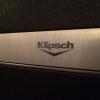
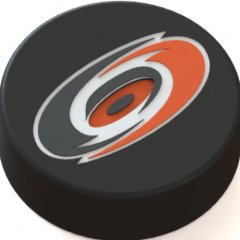
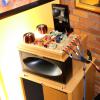

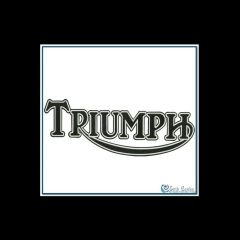

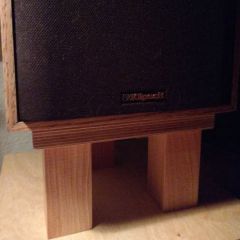
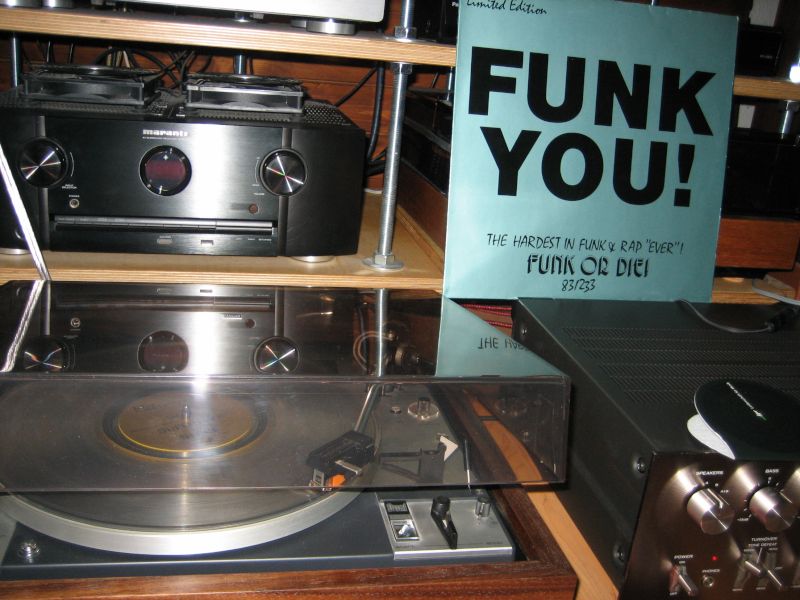


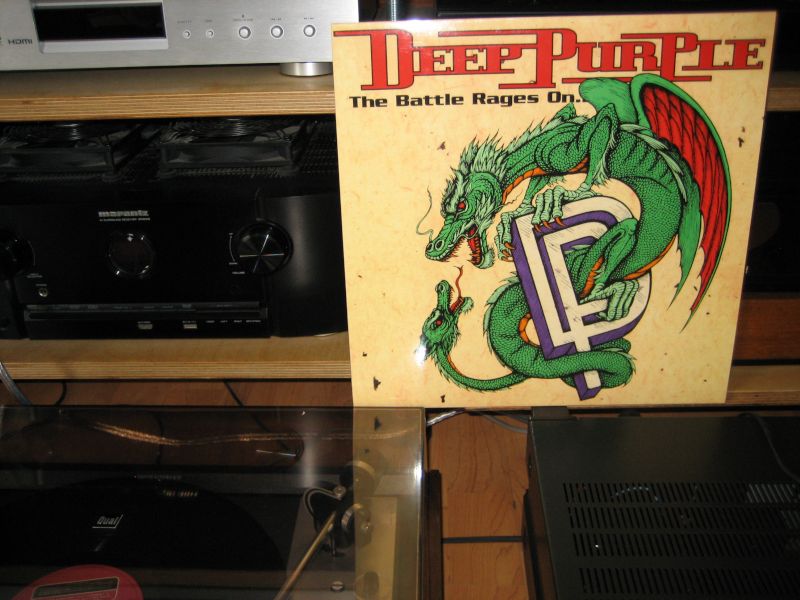
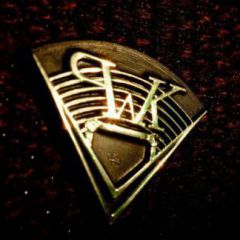



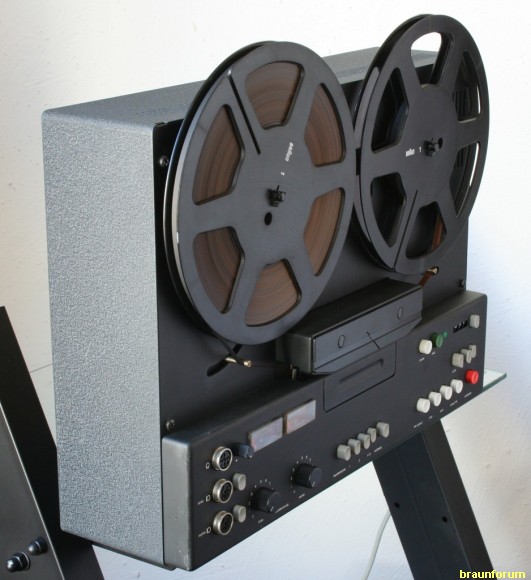

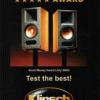
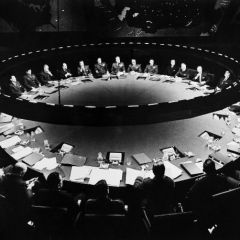




.thumb.jpg.099887611a5004cbabdbaa71e611aee6.jpg)




